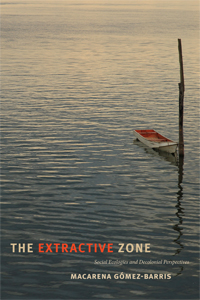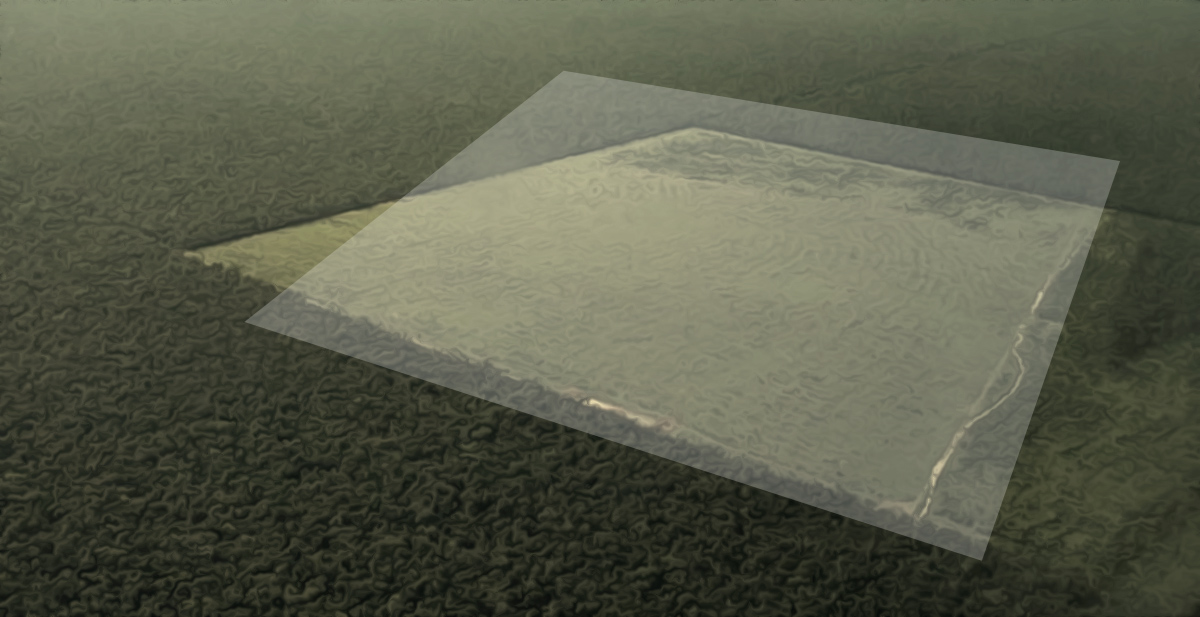My phone buzzes with emergency alerts as the electricity in my home goes in and out throughout the night. For the next few days, I wait as the perimeter of mandatory evacuations creeps closer to my home. Outside the air is thick with smoke. A layer of ash settles on everything, and the sky has an opaque orange glow that is both beautiful and terrifying. Last year, in 2017, California experienced some of its most destructive and deadly wildfires on record. As the Thomas fire burned through the hills in Ventura and Santa Barbara counties, many farm workers were still expected to show up to work in the fields without protective masks despite the hazardous air quality. Just days after the Thomas fire started, several more fires broke out and spread rapidly through other parts of southern California. At least two of these fires were reportedly caused by cooking fires at homeless camps. A news anchor, reporting on the Skirball fire that likely started at an encampment in Los Angeles, remarked that so far no arrests had been made. When the homes of the wealthy are threatened or destroyed, there is the expectation that something must be done or that someone must be punished, yet unsurprisingly this concern is not extended to the thousands of people in LA living without housing.
These fires highlight how access to safe and affordable housing is an ecological issue. But the fires have also been used in violent rhetoric that casts homeless people as a problem to be dealt with. In the wake of these fires, police and fire departments have demanded increased access to drones and other technologies often used to surveil communities of color. And then there is the fact that many of the people fighting wildfires in California are prisoners being paid far less than minimum wage to do so. These incarcerated firefighters have also taken part of search and rescue efforts after the deadly mudslides in Santa Barbara County that were exacerbated by the Thomas fire. This is one case where the complex machination of carcerality, racial capitalism, and climate change comes together, but it is only one example in a long string of recent environmental catastrophes. These devastating events, which seem to occur with greater frequency, make clear that there is no way to think issues of environmental destruction outside of its entanglement with capitalism, colonialism, and racist state violence.
The examples of racial, class, and colonial oppression unfolding as ecological violence are many: ongoing lead contamination in the water of the majority black city of Flint, MI; one of the world’s largest incinerators burning the trash of wealthy suburbanites into the lungs of Detroiters; the abandonment of the islands of Dominica and Puerto Rico in the wake of hurricane Maria; the struggle for Quilombo land rights among Afro-Brazilian descendants of fugitive slaves, who are fighting the encroachment of developers; the continued theft and poisoning of indigenous land and water for extractive capitalism in North Dakota, Utah, and throughout the Americas. While environmental and climate disasters may seem relatively new, they are in fact in line with a longer trajectory of land theft and racial violence produced by settler colonialism and the afterlife of slavery. In the U.S. context, settlers’ use of the concept of terra nullius to justify dispossessing indigenous peoples from their lands is based on the notion that the only valid relationships with land are ones predicated on whiteness and domination. This logic continues to inform the ecocidal land theft practiced by the U.S., made recently famous by the struggle over the Dakota Access Pipeline which was diverted from Bismarck through Sioux territory after residents in Bismarck objected.

Macarena Gómez-Barris, The Extractive Zone: Social Ecologies and Decolonial Perspectives. Duke University Press, 2017. 208 pages.
Communities of color have long articulated how environmental concerns are anchored to racism, reproductive violence, and criminalization. As a consequence of antiblack and anti-indigenous textures of ecological destruction, ecological concerns are necessarily gendered and sexualized as well. The legacy of reproductive justice activism by black, indigenous, and Latina women and feminists illuminates connections between environmental racism, sexual violence, and forced sterilization. In light of ongoing rhetoric about overpopulation and other racialized narratives of control put forth in the name of environmentalism, this tradition is a crucial one. These histories suggest that climate chaos is not an undifferentiated phenomenon caused or experienced evenly by a universal notion of humanity. In fact, it is the residue of conquest. Approaches to addressing climate change that are unconcerned with its racial and colonial implications will ultimately perpetuate them. Attempts to absorb environmentalism into capitalism and neocolonialism can never address the forms of racial violence that emerge as ecological destruction. The world in which these catastrophes are possible is the same world in which black and indigenous people experience racist state violence like police killings and incarceration. We must consider what possibilities exist for relationships with the earth that do not reproduce the conditions that brought environmental destruction. Gómez-Barris’s book begins to do this work.
The Extractive Zone might be thought of as a queer hemispheric text, in so far as Gómez-Barris asks important questions about the gendered and racialized transnational flows of people, labor, spiritualities, economies, and natural resources as they are bound up with notions of decolonization and futurity. Using what she describes as a queer decolonial femme method, Gómez-Barris draws threads between each of the indigenous communities she has written about, detailing the imbrication of conquest, neoliberalism, extractive capitalism, settler colonialism, ecological destruction, and epistemic violence. Importantly, she does so without flattening distinctions between and within the communities whose specific histories and contemporary struggles she outlines in the book “A decolonial femme standpoint does not universalize or dehistoricize the specificity of global spaces or material formations,” she writes, “but instead offers micro and submerged entry points into spaces saturated in coloniality.” The author describes, for example, how Mapuche communities in southern Chile experience and resist ongoing criminalization tied to neoliberal privatization of their land, beginning in the Pinochet regime. In another chapter, she writes about organizing in the Yasuní region of Ecuador, in response to former president Rafael Correa’s government’s rescission of the Yasuní-ITT initiative, an agreement aimed at protecting indigenous tribes like the Tagaeri and Taromenane and their lands from oil extraction. Despite Correa’s leftist politics and stated commitment to ecological protection, he opened the highly biodiverse region to petroleum extraction by transnational companies. While both of these struggles involve threats to indigenous land and life, Gómez-Barris’s study of the extractive zones and submerged perspectives in each context does not assume that these communities share an identical history or relationship to the nation-state. Gómez-Barris does highlight, however, the way that these varied perspectives call into question the ability of the state to provide reparation, redress, or protection for indigenous people and land, given that the state is often that which perpetuates colonial and ecological violence, and as such, the submerged perspectives she engages insist on a kind of refusal of inclusion or recognition.
Gomez-Barrís provides a reading of Mapuche filmmaker Francisco Huichaqueo’s film Mencer: Ni Pewma, an experimental documentary focused on the relationship between the criminalization of Mapuche people in southern Chile, state violence under Pinochet’s regime, and the imposition of monoculture tree plantations by private corporations. Gómez-Barris notes how each of these forces constitute a permanent war against Mapuche people, and that the film confronts these violences while also doing the important intergenerational work of creating an archive for future generations. By cataloging historical violence alongside a tradition of Mapuche refusal, Huichaqueo’s film insists on the futurity and survival of Mapuche people amid ongoing colonial and ecological violence. Creating an archive to document a genealogy of refusal for future generations is an especially powerful practice against the tendency for resistance to be co-opted, repackaged, and commodified. Gómez-Barris’s text shows that the forms of refusal, fugitivity, and insurrection found in the art, literature, and organizing practices of black and native communities hold important ecological knowledges necessary for survival.
These black and indigenous traditions have emphasized that solutions, redress, and healing will not come from the settler states, multinational corporations, or capitalist paradigms that have produced ecological destruction, no matter how much these entities try to co-opt or absorb struggles for ecological justice. What would it mean if climate chaos and ecological destruction were understood as deeply consistent with the existence of the United States? It would mean looking to abolition and decolonization as projects to work toward in pursuit of climate justice. It would mean doing the heavy work of imagination, so that we dream up a world more beautiful and alive than anything neoliberal environmentalism could promise. This is the kind of imagination practiced in the politics and activism of Mujeres Creando, a decolonial anarchist feminist organization based in La Paz, Bolivia. In the final chapter of her book, Gómez-Barris describes the group’s creation of the Feminist Constitution, a rewriting of the Bolivian constitution put forth by Evo Morales. Written from the voices of indigenous women, sex workers, and lesbians, and centralizing the oppressions faced by these communities, the Feminist Constitution insists that these particular perspectives are sites of knowledge production that hold important insight about the logics of colonialism, patriarchy, and heterosexism in Bolivian society. The Feminist Constitution resists the promise of state recognition and inclusion and has at its center a decolonial feminist future that is thorough in its insistence on indigenous sovereignty, ecological justice, queer and trans liberation, and an end to policing, militarism, and gendered violence. In describing the political demands included in the Feminist Constitution, The Extractive Zone offers a glimpse into what kind of world may be possible through the everyday practices and knowledges of submerged perspectives.
